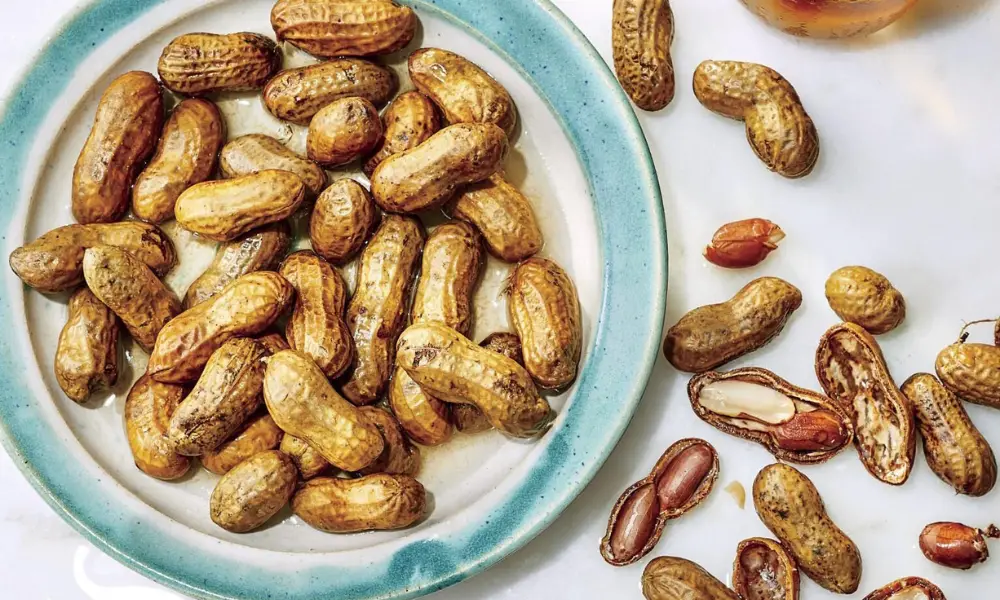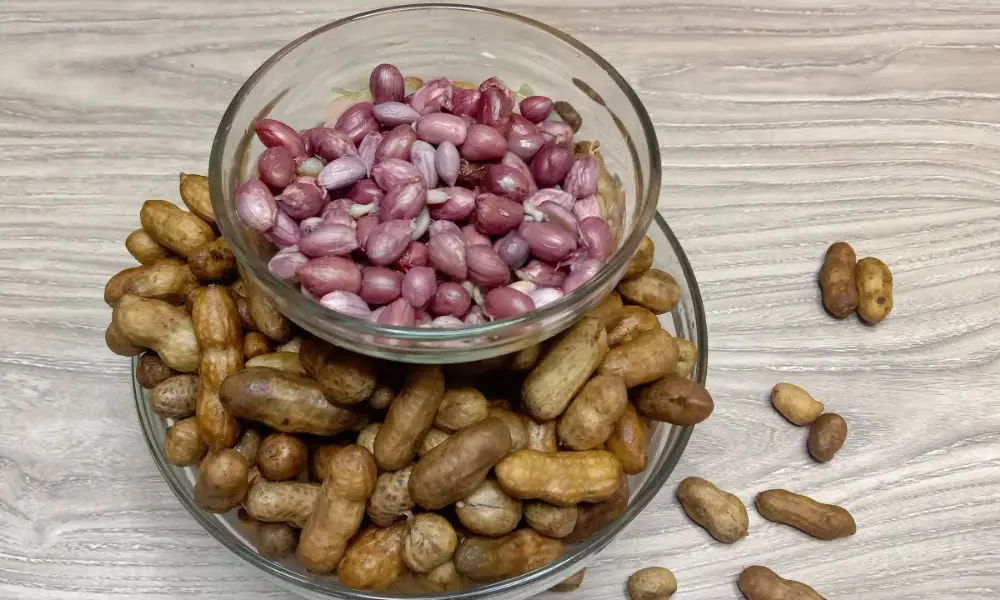Despite being traditionally a Southern dish, boiled peanuts can be found in grocery stores or made home by foodies and transplanted Southerners from all over the country. Although ripe, mature peanuts can also be used, green or under-ripe nuts make the tastiest boiling peanuts. Peanuts that are stored have a limited shelf life, but if handled carefully, they can be kept longer.
If you want to enjoy boiled peanuts for a long time, you should know how to store them. Several factors should be considered before you put your boiled peanuts in brine. This article will discuss how long boiled peanuts will stay fresh, how to store boiled peanuts in brine and determine if your peanuts are perfectly cooked.

How to Store Boiled Peanuts
Step 1
Immediately after buying, consume cooked peanuts from the store.
Step 2
Store boiled peanuts in the refrigerator in sealed containers for five to ten days. While store-bought nuts may only survive for five before the flavor gets rancid, fresh boiled peanuts can be kept in the refrigerator for up to ten days.
Step 3
Boiling peanuts that have cooled should be frozen for future use in airtight containers or freezer bags with zippers. Boiling peanuts can be frozen and kept for years.
Step 4
If the boiled peanuts are frozen, they should thaw for several hours before eating.
Tip
The shells of green peanuts are boiled. 10 ounces of salt to 1 gallon of water equals a brine. Pour over the peanuts in an enormous stockpot or saucepan. Cook the nuts for 45 minutes or until they are soft. The saltiness of the cooked peanuts can be increased by letting them sit in the brine for up to an hour after boiling them.
Shelled, mature peanuts can be boiled in a crock pot. Put 1 pound of peanuts in the pot, then add water to cover them. After soaking the peanuts overnight, simmer them in a slow cooker for 8 hours on low, followed by 1 1/2 hours on high. During the final 30 minutes of cooking, if desired, add up to 5 Tbsp. Of salt to the water.
Why Should We Eat Boiling Peanuts?
I won’t be surprised if you’re from the Southeast of the US and if you enjoy boiling peanuts. After all, this is one of the more well-liked snacks in the area. Back then, a friend of mine from college would have boiling peanuts virtually every afternoon. And she didn’t grow tired of it.
In any case, I can see why cooked peanuts are so beloved. One, it tastes good. Additionally, it’s healthy. It contains fewer calories and less fat than raw peanuts. It also contains many nutrients that guard against oxidation in our cells.
Naturally, peanuts have a high fiber content, which is why peanut oil is so well-liked. The fiber content of boiled peanuts is slightly higher than that of dry or roasted varieties. Additionally, fiber is necessary for regularity and to prevent constipation. Diabetes and heart disease risks can both be decreased by it.
Low-calorie boiled peanuts are available. That might explain why my college friend used to consume so much of it. You can eat a lot of boiled peanuts without gaining weight.
The method you eat boiling peanuts is up to you. Usually, I use my hands to open the shells. My friend claims that some men in their community simply crack open the whole peanut in their mouths. After doing so, they spit out the shell and remove the nut.
She also says that she knows folks who consume the entire meal.
What is the Shelf Life of Cooked Peanuts?
Only about 24 hours can pass after boiling peanuts if left at room temperature. Boiling the peanuts might add moisture to them, which can cause them to spoil quickly.
Boiling peanuts that are left over should be stored in the refrigerator or freezer. The shelf life of cooked peanuts can be increased by keeping them below 40 degrees Fahrenheit. Low temperatures can inhibit the growth of microorganisms.
When kept in the refrigerator, boiled peanuts should be safe to eat after 7 to 10 days. Refrigerating boiled peanuts has no effect on their flavor. In actuality, boiled peanuts taste best when served cold.
However, I advise freezing the peanuts if you want to keep them fresh for a long time. Simply place them in a plastic bag and freeze them.
Simply defrost the boiled peanuts in the refrigerator overnight until you’re ready to eat them. The frozen boiled peanuts can also be microwaved to defrost. Or soak them for five to ten minutes in hot water.
How Can You Tell if Cooked Peanuts are Bad?
There are a few indicators that boiling peanuts have spoiled. I frequently examine the nut’s surface.
Spots that are grey or green on the surface show that mold has grown there. Of course, I would throw those peanuts away. I also advise against consuming peanuts that are faded or black.
The nuts also have a fragrance. While rotten peanuts smell foul, fresh peanuts have a distinct, nutty aroma. Or just taste the peanut; it should taste creamy and nutty, not sour and bitter.
What are the Side Effects of Eating Boiled Peanuts?
Although many people like foods made with peanuts, others have severe allergies to them. People who are allergic to peanuts run the risk of dying from anaphylactic shock if they are exposed to them. These patients may experience a fatal reaction even from inhaling peanut dust or only one peanut. Eating food prepared on equipment that has previously processed peanuts may also trigger an allergic reaction, rendering such meals impossible to avoid.
One idea explaining the rise of peanut allergies is the difference between how peanuts are processed in North America and other countries like China and India. Peanut allergies are remarkably uncommon, even though peanuts are extensively consumed in China and India. A 2003 study found that roasting peanuts, more common in North America, makes the main peanut allergen Ara h2 a better inhibitor of the digestive enzyme trypsin, increasing its resistance to digestion. Additionally, it has been demonstrated that roasting increases this allergen’s ability to protect against the digestion of Ara h1, a serious peanut allergy.
Even though a peanut allergy might be lifelong, a 2003 study indicated that 23.3% of children outgrow it. Although the evidence isn’t clear-cut, using skin care products with peanut oil has been associated with peanut allergy in children. Soy consumption and genetic predisposition have both been linked to peanut allergy. To treat the allergy, an investigational drug called TNX-901 is currently being tested in several school districts that have prohibited peanuts. People sensitive to peanuts may not also be allergic to other nuts because the peanut is not related to other nuts and is a member of the legume family.
How are Peanuts Used?
Peanuts can be consumed in various ways: raw, blanched, roasted, boiling, fried, powdered, or made into peanut butter. The most nutritious way to consume them is with thin, papery skin since it contains many antioxidants and phytochemicals. Increase your intake of peanuts, whether in the form of nuts or peanut butter.
Here are some recipes that incorporate peanuts in different ways:
Put peanuts in pies or cookies.
Make a sandwich with peanut butter and banana.
To hummus, add peanut butter.
Top your yogurt with peanuts.
Add peanuts to your salad.
To your stir-fry or noodle meal, add peanuts.
A trail mix with peanuts in it.
Thai peanut sauce is used to dunk spring rolls.
What are the Advantages of Peanuts for Health?
Lower Risk of Diabetes
Since they have a low glycemic index, peanuts won’t raise your blood sugar levels. Studies have shown that eating peanuts lowers the risk of type 2 diabetes in women.
Lower Inflammation
Fiber from peanuts is a great source for promoting digestion and lowering inflammation in the body.
To Prevent Cancer
According to studies, eating peanut butter may lower an older person’s risk of developing gastric non-cardia adenocarcinoma, a kind of stomach cancer.
Reference: Functional components in peanuts
A Peanut is a Legume, Right?
The plant family Leguminosae comprises peas, beans, and peanuts. The best source of concentrated protein in the plant kingdom is found in legumes, edible seeds, and enclosed in pods. Legumes are edible seeds encased in pods, such as beans, lentils, and peas. Although peanuts’ physical makeup and nutritional benefits are more akin to those of other legumes, nuts are more commonly used in diets and cuisines. Despite having the word “nut” in its name, the peanut is a legume rather than a nut.
How are Peanuts Raised?
Plants with green leaves that are 18 inches long grow from peanut seeds (kernels). Unlike most plants, the peanut plant produces fruit underground while blooming above ground. Yellow blooms start to bloom about 40 days after planting. When the blooms self-pollinate, the petals fall off, and the peanut ovary starts to develop. An ovary in development is referred to as a “peg.”
The developing over, called a “peg,” leaves the plant and sends out a little glove on the ground. As it turns horizontally to the earth’s surface, the peanut embryo grows and assumes the shape of a peanut.
The fact that peanut plants are ambiguous regarding fruiting suggests that they will continue to bloom, peg, and produce peanuts for as long as the surrounding environment allows.
What is the Best Advice on How to Cook Peanuts?
How could you possibly boil peanuts perfectly? The quality of the raw peanuts is one item to take into account. A discolored peanut should not be purchased since this indicates mold growth.
Aflatoxin can, after all, be produced by mold. This poisonous chemical also promotes cancer. Peanuts that are exposed to humidity are very prone to having aflatoxin. In Africa and Southeast Asia, aflatoxin in peanuts is relatively prevalent.
Boiling peanuts takes a long time, too. Timing is crucial while boiling peanuts. Peanuts become softer the longer they are boiled. Even how long you soak them might impact how juicy and flavorful they are within the shells.
To boil green peanuts, you should allow at least an hour. I even boil them for four hours when I have the time. Meanwhile, cooking dried raw peanuts for up to 24 hours will make them incredibly soft.
Conclusion
Peanuts are a staple in Southern cuisine. They were created by enslaved West Africans but were soon popularized by white cooks during the Civil War. This is a classic example of how the South elevated common ingredients and made them uniquely Southern. Boiled peanuts were no exception.
Boiling peanuts can be kept for a week or two in the refrigerator. After that, they will lose their freshness and may start to turn rancid. To extend the shelf life, store them in an airtight container with desiccant and keep them in the refrigerator. Boiling peanuts can be used for making peanut butter or in making desserts, like Nutella. Boiled peanuts also make an excellent topping for chocolate syrup or marshmallow fluff.

